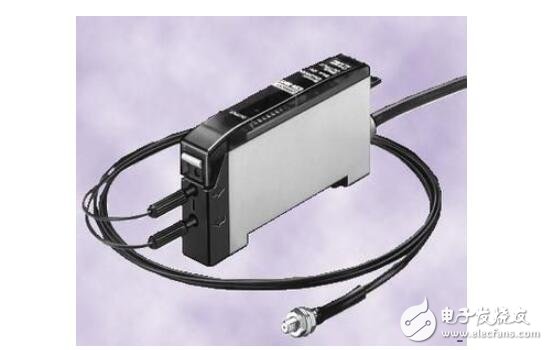1. Functional (all optical fiber type) optical fiber sensor
Using optical fibers (or special optical fibers) with sensitivity and detection capabilities for external information as the sensor element, the sensor combines "transmission" and "sensation". The optical fiber not only plays the role of light transmission, but also uses the change of its optical characteristics (light intensity, phase, polarization state, etc.) under the action of external factors (bending, phase change) to realize the functions of "transmission" and "sensation" . Therefore, the optical fiber in the sensor is continuous. As the fiber is continuous, increasing its length can improve sensitivity.
2. Non-functional (or light-transmitting) optical fiber sensor
The optical fiber only plays the role of guiding light, only "transmits" but not "sense", and the "feeling" function of external information is completed by functional components with other physical properties. The fiber is not continuous. This type of optical fiber sensor does not require special optical fibers and other special technologies, is relatively easy to implement, and has low cost. But the sensitivity is also low, and it is used in occasions where the sensitivity is not too high.
3. Pick-up optical fiber sensor
The optical fiber is used as the probe to receive the light radiated by the measured object or the light reflected or scattered by it. Typical examples are fiber laser Doppler velocimeter, radiation type fiber temperature sensor and so on.
At present, countries all over the world are vigorously developing and applying optical fiber sensing technology. In the field of optical fiber sensor security applications, many foreign and domestic companies have developed various types and functions of optical fiber detectors such as optical fiber sensors.

The basic principle is that the physical quantity to be measured causes the change of the transmitted light intensity in the optical fiber, and the measurement to be measured is realized by detecting the change of the light intensity. The intensity of light emitted by a constant light source is injected into the sensor head. In the sensor head, the intensity of the light changes under the action of the measured signal, that is, it is modulated by the external field, making the envelope of the output light intensity and The shape of the measured signal is the same, and the output current measured by the photodetector is also modulated in the same way. The signal processing circuit detects the modulated signal again to obtain the measured signal.
The advantages of this type of sensor are simple structure, low cost, and easy to implement. Therefore, it was developed and applied earlier. Now it has been successfully applied to displacement, pressure, surface roughness, acceleration, clearance, force, liquid level, vibration, radiation, etc. measuring. There are many ways of intensity modulation, which can be roughly divided into reflection type intensity modulation, transmission type intensity modulation, light mode intensity modulation, refractive index and absorption coefficient intensity modulation, and so on.
2) Phase modulation type optical fiber sensorThe basic principle is: under the action of the measured energy field, the phase of the light wave in the optical fiber changes, and then the interferometric technique is used to convert the phase change into the light intensity change, thereby detecting the physical quantity to be measured. The advantages of phase modulation optical fiber sensors are extremely high sensitivity, large dynamic measurement range, and fast response speed. The disadvantage is that the requirements for the light source are relatively high, and the requirements for the precision of the detection system are relatively high, so the cost is correspondingly high. .
3) Frequency modulation type optical fiber sensorThe basic principle is to use the Doppler frequency shift effect of light reflected or scattered by a moving object to detect its moving speed, that is, the light frequency is related to the movement state between the light receiver and the light source. When they are relatively stationary, they receive the oscillation frequency of the light; when there is relative movement between them, the received light frequency and its oscillation frequency are shifted, and the magnitude of the frequency shift is related to the magnitude and direction of the relative movement speed. Therefore, this kind of sensor is mostly used to measure the speed of the object.
4) Polarization modulated optical fiber sensorThe basic principle is to use the change of the polarization state of light to transmit the information of the measured object. The polarization state modulation fiber optic sensor has high detection sensitivity, can avoid the influence of the intensity of the light source, and the relative phase modulation fiber optic sensor has a simple structure and is easy to adjust. Its main application areas are: current and magnetic field sensors using the Faraday effect; electric and voltage sensors using the Paul effect; pressure, vibration or sound sensors using the photoelastic effect; temperature, pressure, and vibration sensors using birefringence. At present, the most important thing is to monitor strong currents.
5) Wavelength modulation type optical fiber sensorThe traditional wavelength modulation optical fiber sensor is realized by using the spectral characteristics of the sensing probe to change with the external physical quantity. Such sensors are mostly non-functional sensors. In the wavelength modulated fiber optic probe, the fiber is simply used as a light guide, that is, the incident light is sent to the measurement area, and the returned modulated light is sent to the analyzer. The key to optical fiber wavelength detection technology is the good performance of the light source and spectrum analyzer, which has a decisive influence on the stability and resolution of the sensing system.
Back Seat Headrest Pillow Phone Holder
Back Seat Headrest Pillow Phone Holder,Samsung Tablet Car Holder Back Seat,Car Back Seat Organiser With Tablets,Car Back Seat Tablet Holder
Ningbo Luke Automotive Supplies Ltd. , https://www.car-phone-holder.com